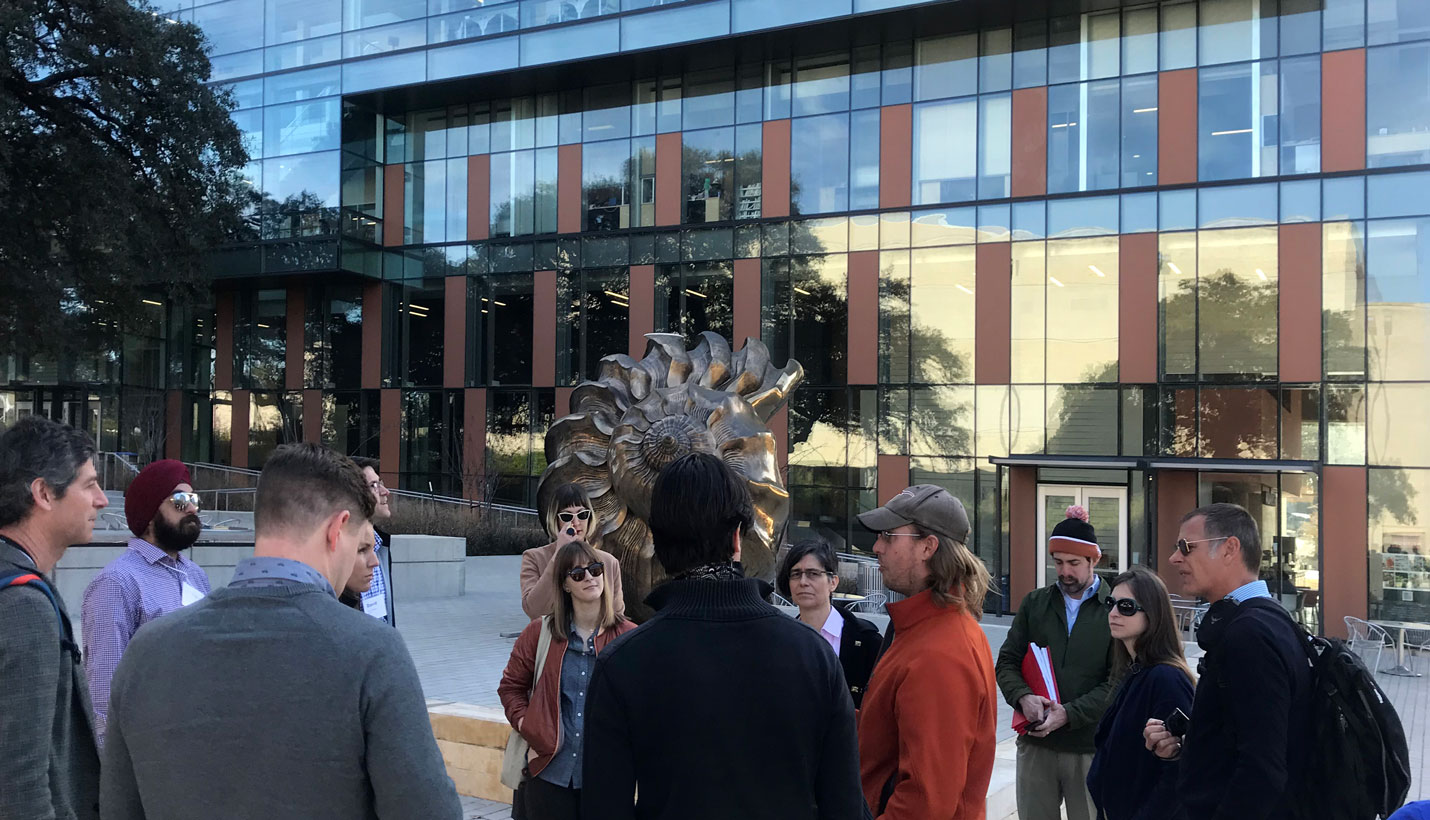



Sustainability Design Leaders Tour Dell Medical School
Yesterday, Page Principal Brian Roeder led visiting sustainability design leaders on a tour of Dell Medical School at The University of Texas at Austin. Sharing his insights with the group as the Page project manager for several of the buildings, Brian emphasized that the buildings should perform well beyond their respective opening days. “Post occupancy evaluations are an essential part of achieving sustainability goals and will be useful tools to track the established targets vs. reality,” noted Brian. “We will be working alongside the Office of Sustainability at The University of Texas to help make data part of the process and push innovation."
Last fall, the Dell Medical School District, which is on track to receive six sustainability-focused certifications in five different rating systems, celebrated certification by the Sustainable SITES Initiative. SITES promotes the creation of sustainable built landscapes that reduce demand on natural resources and sustain healthy ecological systems. Three of the district's buildings achieved LEED Gold certification.
- The 85,000-square-foot Health Learning Building design is based on the inextricable link between learning, health and the built environment. For the Health Learning Building, the project team utilized a whole building approach to energy modeling and life cycle cost analysis to evaluate energy strategies and design the building to achieve 44% energy savings.
- The 260,000-square-foot Health Discovery Building provides state-of-the-art multi-disciplinary clinical research laboratories; laboratory support spaces, including a vivarium; faculty and student offices and administrative offices. For the Health Discovery Building, the project team sought to provide a high-quality environment for scientists, while also considerably reducing the building’s environmental impact and operations costs by reducing energy and water consumption.
- The 233,000-square-foot, Health Transformation Building promotes the advancement of the medical office building concept and features a five-story dry lab linking the structure to the Health Discovery Building. Like its neighbor, the sustainability strategy in the building focuses on reduction of water and energy consumption as well as the use of high-quality materials and design supporting optimal indoor air quality.
For more details on the sustainable features of each building and the larger district, click here.
01/25/2018
People
- Daniel Brooks
- Robert E. Burke
- Ginny Chilton
- Joshua D. Coleman
- Kregg Elsass
- Mattia J. Flabiano III
- Patrick Gurley
- Breanne Hanson
- Shawn-Marie Henson
- Jeffrey G. Jewesson
- Jill Kurtz
- Matthew Z. Leach
- Ryan Losch
- Joseph P. Moore
- Erin D. Nash
- Bryan O'Sullivan
- Freddy Padilla
- Dale Robinson
- Brian D. Roeder
- Sana Sabharwal
- Kimberly Schuessler
- Jerald L. Segner
- Jonah T. Sendelbach
- Talmadge Smith
- Lawrence W. Speck
- Wendy Dunnam Tita
- Randy C. Twedt
Related Posts
- A District Built For Health
- Tempering the Temporary: Improving thermal comfort and safety in relief shelters
- Ushering in New Era of Science Research
- Nurturing Resiliency through Relationships
- Overview: Dell Medical School at The University of Texas at Austin Updates
- Winner: Community Impact Award
- New School of Thought at New School of Medicine








